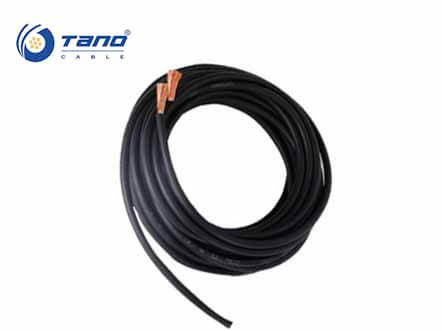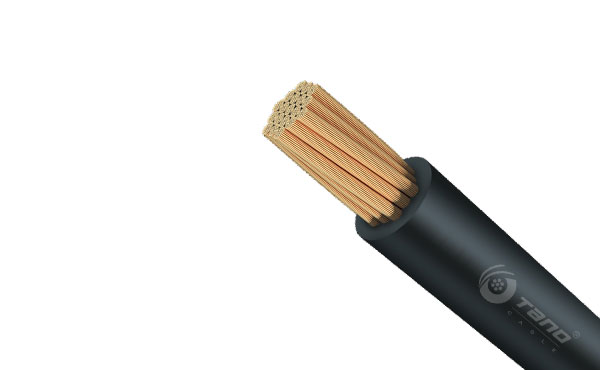14
Feb
Welding Cable vs. Battery Cable,can you substitute one for the other
Share:
Welding and battery cables share many similarities. Compared to other cables, both are flexible, single core, carry the same current or amperage, and have high temperature ratings, up to 105ºC or higher. Despite this, they have several significant differences related to their applications.
What is Welding Cable?
Welding cables are extremely flexible, with a high number of very fine strands made of copper wire. They're insulated with synthetic rubber materials, including ethylene monomer rubber (EPDM) and neoprene. The outer covering is relatively soft, abrasion-resistant, and able to handle flexing and abuse. Welding cables retain their flexibility at very low temperatures and withstand high temperatures. You can use welding cables on circuits up to 600 volts.
What is Battery Cable?
Battery cables are relatively rigid, with heavier gauge copper wire strands than welding cables. Insulation materials are PVC and cross-linked polyethylene (XLPE). Battery cables may be difficult to bend, but once formed, they retain their shape. Their insulation withstands arduous under-hood temperatures and is resistant to gas, oils, and lubricants. The voltage rating of battery cables is 60 volts.
Can you use Welding Cable as Battery Cable?
Yes, you can. Welding cables make good battery cables when you need to bend the cable a lot to run it around under body obstructions. You must support the cable fully so it can't vibrate or touch moving parts. Also, make sure to use corrugated cable protectors to minimize the risk of abrasion. Welding cables make good jumper cables.
Are Battery Cables Suitable for Welding?
No, you should not use battery cables for welding. Many welders have an open circuit voltage that exceeds 60 volts, so it's not safe to use battery cables. Also, a battery cable may kink and snag on obstacles because it's not sufficiently flexible.
Choosing the Right Size Welding or Battery Cable
It is important to select a cable with the correct amperage rating. Also, you need to consider voltage drop over the length of the cable. For vehicle systems, try to keep the volt drop below 0.3 volts. Use the voltage drop calculator to determine a suitable cable for your application in terms of American wire gauge (AWG) size, current drawn, and voltage drop.
It's considered good practice to choose a cable with a slightly greater current rating than required as this reduces the voltage drop, particularly on long welding cables and in 12- and 24-volt automotive systems.

What is Welding Cable?
Welding cables are extremely flexible, with a high number of very fine strands made of copper wire. They're insulated with synthetic rubber materials, including ethylene monomer rubber (EPDM) and neoprene. The outer covering is relatively soft, abrasion-resistant, and able to handle flexing and abuse. Welding cables retain their flexibility at very low temperatures and withstand high temperatures. You can use welding cables on circuits up to 600 volts.
What is Battery Cable?
Battery cables are relatively rigid, with heavier gauge copper wire strands than welding cables. Insulation materials are PVC and cross-linked polyethylene (XLPE). Battery cables may be difficult to bend, but once formed, they retain their shape. Their insulation withstands arduous under-hood temperatures and is resistant to gas, oils, and lubricants. The voltage rating of battery cables is 60 volts.
Can you use Welding Cable as Battery Cable?
Yes, you can. Welding cables make good battery cables when you need to bend the cable a lot to run it around under body obstructions. You must support the cable fully so it can't vibrate or touch moving parts. Also, make sure to use corrugated cable protectors to minimize the risk of abrasion. Welding cables make good jumper cables.
Are Battery Cables Suitable for Welding?
No, you should not use battery cables for welding. Many welders have an open circuit voltage that exceeds 60 volts, so it's not safe to use battery cables. Also, a battery cable may kink and snag on obstacles because it's not sufficiently flexible.
Choosing the Right Size Welding or Battery Cable
It is important to select a cable with the correct amperage rating. Also, you need to consider voltage drop over the length of the cable. For vehicle systems, try to keep the volt drop below 0.3 volts. Use the voltage drop calculator to determine a suitable cable for your application in terms of American wire gauge (AWG) size, current drawn, and voltage drop.
It's considered good practice to choose a cable with a slightly greater current rating than required as this reduces the voltage drop, particularly on long welding cables and in 12- and 24-volt automotive systems.






